#visigoth posting
Explore tagged Tumblr posts
Text
if you dont understand genderfluid people, you are a bigot with no sense of humour
2 notes
·
View notes
Text
daniil what about the visigoths :(
also i really like the phrase ‘daniil will defend rome’ because it makes it sound like the visigoths are attacking or something
#stop i was so looking forward to reblogging this post when he won saying he beat the visigoths#tennis
4 notes
·
View notes
Text
It makes sense that the HTTYD Vikings wouldn’t know this while they were fighting for their lives against Furious’ forces but….Furious declared war on ALL of humanity right?? Did he just start with the Vikings and the Americas have no fucking clue what might be about to hit them? Is everyone else just chilling or did HTTYD become an alternate history series off screen while dragons stole Visigoth valour and fridged the Roman Empire hundreds of years earlier? Aka were their multiple fronts to the red rage that attacked other human societies or did Furious pile all of his forces on the Vikings? Is this a post apocalypse novel set in America where secretly the rest of the world is totally fine and the Americans don’t know?
#bc like…Hiccup is the biggest threat to the cause thus the Vikings are Top Priority™️ to the red rage#but also like the Romans were shown to be pretty fucking awful and low key worse then a lot of the Vikings towards dragons so we’re they#really just left alone the whole time??#also..the world big and that means many humans many dragons#Is it realistic to think Furious could both rally ALL dragons everywhere to this but also convince dragons who had suffered at the hands of#non Viking humans to go attack these strangers first rather then getting direct revenge??#so it’s honestly possible that the Roman Empire dragons all had an uprising sparked by Furious’ movement and encouragement and just fucking#killed all the Romans or something#also like?? how are the northern wanderers doing during this bc they’re like the chill humans canonically but I don’t think furious cares#im guessing they’re all low priority#httyd books#httyd book spoilers#the dragon furious#I genuinely can’t remember if the Romans are brought up at all in the later books#shut up Flynn#not sw#these tags are a mess
60 notes
·
View notes
Text
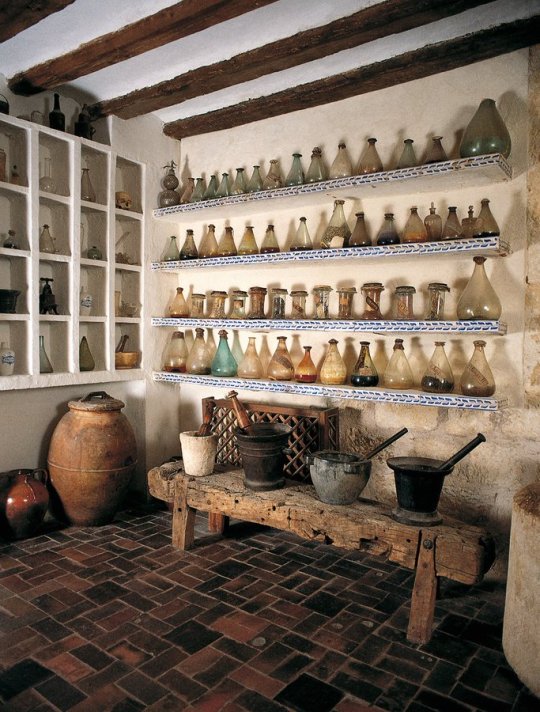
Silos's pharmacy.
In the ancient Abbey of Saint Dominic of Silos, the old pharmacy has been preserved to these days. In old times, it had a botanic garden, a pharmaceutical laboratory, a very interesting library and hundreds of earthenware pots for potions and remedies.
More information about the Abbey here (EN):
The monastery dates back to the Visigothic period of the 7th century. In the 10th century, the abbey was called San Sebastián de Silos, but acquired its current name when Dominic of Silos was entrusted to renovate the abbey by Fernando the Great, King of Castile and León. Dominic had been prior of the Monasteries of San Millán de la Cogolla before being driven out with two of his fellow monks by King García Sánchez III of Navarre, for opposing the king's intention to annex the monastery's lands.
Ps. Thanks to all the people who has reblogged and liked this post. 😊
#Spain#Middle Ages#St Dominic of Silos#Monasteries#Catholic Monasteries#Visigoths#King Fernando the Great of Castille and Leon#San Millán de la Cogolla#King García Sánchez III of Navarre#Castille and Leon#Navarre
123 notes
·
View notes
Text
I was DMing a friend yesterday about how the lotr films (imo) do a great job of making Gondor look vaguely Carolingian — I was kind of holding it up as a positive example of intuiting and extrapolating on what Tolkien might have meant when doing adaptations — but said I wasn’t personally sure whether Tolkien was pulling from the Carolingian Empire or maybe the very shaky papacy further south or Visigoths or something. Or all of it!
Anyway then I settled in for my evening pop-nonfiction read, and got to find out why I’m always mixing up the Merovingians and Carolingians, a thing I will never do again. Bc yes they were two ruling families, but one was originally the fucking… stewards. I mean mayors. Haha.


(From The Private Lives of the Saints, Janina Ramirez, 2015. pp. 346-7)
Several points:
- I KNOW I made a post back in Rohan about how it’s very nice and wholesome that Tolkien wrote a fix-it for the brutal sack of the Saxons (Rohan*) by the big post-Roman southern kingdom but I didn’t know how thoroughly he did that. He really said what if Carolingians Gondor and Saxons et al Rohan bonded together to fight evil 💗 instead 💗
- So I don’t actually think Tolkien goes 1:1 with characters and historical figures, but I’m weeping at the idea that Boromir was a sort of Charlemagne but stuck in an AU where Charlemagne touches a magic ring and dies (despite being cool ☹️)
- Alternatively, it was actually Charlemagne’s dad who made a deal with the pope (NO idea on this one lmao good luck everyone) and seized power. Which would make Boromir something of a… potential.. Pippin figure.

Like he’s not, it’s not 1:1! But each Tolkien character does sometimes feel like an avatar of 3-5 medieval characters in a flashing and beautiful and strange palimpsest, while still utterly being themselves and not a symbol etc. it just so happens that you could, I guess? Make this argument for Boromir if you really really wanted to. Or Faramir! Charlemagne really tried to be both brothers, actually, which is— oh it’s fascinating again. Damn.
- Final incredibly important question: Wh at constellation was on Aragorn’s sword. I need to know the constellation on Aragorn’s sword immediately.
*I sound increasingly insane the further I get in these books but as… as established in previous posts there’s no English Channel in Tolkien’s world so Rohan is sort of the Saxons, Doggerland, and the Angles, Jutes, etc (English kingdoms), running up to Wales (the hill people + where Aragon goes on a Wild Hunt). God it’s so ancient aliens sounding but I cannot disavow any of this at this point.
#won’t let me add alt text do not know why!!#Astro lotr#not my finest posting but incomprehensible is sometimes how lotr leaves me
45 notes
·
View notes
Text
... hello? *taps mic* test one-two, test one-two...
*steals a look at the main page* phew! For a minute there I thought it had been a month since my last post.. only a week, thankfully, but TBH it's felt like a month or longer since I spent time in the friendly confines of Tumblrville.
It reminds me how I've come to think of this corner of cyberspace as an oasis among the tall trees and desolate stretches of my journey through online life and culture. This is a place where I can breathe. The air is still fresh, the water table has not yet been poisoned. No hordes of Visigoths have rampaged through our landscape, and the cilantro thrives in the herb garden on the back deck. I step out for a nice bowl of my other favorite herb, I think of Gilbert who created our flag in a mad dash out of the house, late for a meeting, how he taught me to trim an eighth to make it last for two weeks, and smile.
Hope you're enjoying Pride Month! I'm catching up with the asks and replies and very thoughtful messages and bones and chew toys and treats you've been leaving, awrrrrRRRUFFF!
And thanks for remembering that you can give chocolate to human dogs! 😋🐕🦺🐾
wags + woofs to all. -A.
#treats are always a possibility#smoke a bowl for Gilbert#we are called to be fabulous#now more than ever
36 notes
·
View notes
Text
SET EIGHT - ROUND TWO - MATCH ONE
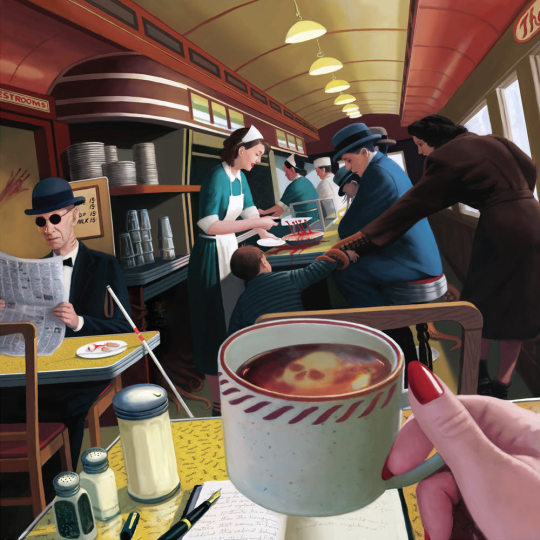

"Blue Plate Special” (2017 - Jeff Lee Johnson) / "The Great Mosque-Cathedral of Córdoba" (c.700 AD)
BLUE PLATE SPECIAL: Very much a "scroll past it, scroll back up, scroll again, scroll up again" work for me. Every time I look at it(including this upload) I've caught something I missed before. It's not world-shaking, but it's not supposed to be. It's supposed to be a world that's just a little off. (@hugintheraven)
THE GREAT MOSQUE-CATHEDRAL OF CÓRDOBA: i feel like standing in it would be a religious experience on its own. like i would fall to my knees in here and start worshipping whoever the architect is this is so stunning. (@chaoticwhoknows) (the previous poll had the entire commentary)
("Blue Plate Special" is a digital painting created by Jeff Lee Johnson and posted to his deviantart in 2017.
The "Mosque-Cathedral of Córdoba" is located in Andalusia, Spain. It was likely originally a Visigoth church, and later turned into a mosque in 785. It was expanded numerous times and converted into a cathedral in 1236. It is now a UNESCO World Heritage Site.)
115 notes
·
View notes
Text

A Cache of Roman Coins Unearthed in Poland
Metal detectorists in Poland helped discover a large cache of ancient Roman coins, Polish officials announced.
The "Group of Explorers" regularly search for metal artifacts and treasures, according to a social media post Friday from the Lublin Voivodeship Conservator of Monuments. The group, led by Janusz Szabat and Piotr Magoch, began a search of the fields surrounding the small town of Księżopol.
In a very small area - less than a fifth of a square mile - the searchers found "a very large number of metal archaeological monuments," the conservator said.



The rarest items found by the searchers were a small cache of ancient Roman denars, or silver coins. There were three silver denars imprinted with the face of Roman emperor Antonius Pius, minted sometime between 138 and 161, as well as a silver denar imprinted with the face of his wife, Faustyna the Younger, minted in 141. A fourth coin with the face of Antonius Pius was found, but this one was minted between 146 and 152, and a part had been intentionally cut away, likely during a trade exchange, according to the conservator. There was also a silver denar with the face of Marcus Aurelius, minted in 174.
There were also some counterfeit denars, made by the Germanic Visigoths. One coin could not be read, but another was again of Antonius Pius. This counterfeit coin is "poorly readable," the conservator noted, but has an image of the emperor and a copy of the inscription on the real coins.




The last coin in the cache was a larger denar, twice the size of the typical coin of this make. That size makes it "fairly rare," the conservator noted. The coin was imprinted with the face of empress Herennia Cupressenia Etruscilla, and was minted between 249 and 251. A quarter of the coin was cut off, again likely during a trade transaction, according to the conservator.
Also found at the site of the excavations were "several small silicon tools" and "dozens of pieces of pottery," according to the conservator. The age of the tools could not be confirmed, but the pottery fragments are "dominated" by pieces from the Roman period, according to the conservator. One fragment dates as far back as the Early Middle Ages, while other pieces are more recent.


A number of bronze fibulae like these ones, used to attach garments, were found which date back to the late Roman period.
The amount of items found in such a small area led officials to believe that they are "dealing with a new, previously unknown archaeological position" that is of "very valuable scientific and conservation points."
Excavation tests will be performed in the area, the conservator said, and more searches of the fields will be carried out.

#A Cache of Roman Coins Unearthed in Poland#Księżopol#Roman emperor Antonius Pius#empress Herennia Cupressenia Etruscilla#Faustyna the Younger#silver#coins#collectable coins#Roman denars#metal detector#metal detecting finds#ancient artifacts#archeology#archeolgst#history#history news#ancient history#ancient culture#ancient civilizations#roman history#roman empire
20 notes
·
View notes
Text
halfwit blacksmith failgirl gets dysphoric maille presenting
1 note
·
View note
Text
OOC | Varmont-ians & Religious Culture
(and to be clear, i mean, like, peeps from the varmont empire -- esp the og nation -- not just the fam...)
so we know a good bit about the astairan religion, and so i wanted to hammer out some details abt its counterpart, roderick's god! so far, we know a few things
they have one god
the phoenix symbol is linked to their religion
they do NOT like witches!!!!
they consider the guardians to be demons
so!! obv there are multiple real-world monotheistic faiths, [ zoroastrianism, atenism, judaism, islam, christianity, and numerous others ], from which we can take inspiration
we also know that ppl from the og varmont country have a wide variety of naming bg's
roderick (anglicized visigothic) famed ruler
alaric (anglicized visigothic) ruler of all
guinevere (anglicized welsh) white phantom
edmund (old english) rich protection/protector
arthur (anglicized welsh or anglicized latin) bear king or honorable/respectful
sebastian (latinized germanic) venerable/exulted
cassandra (greek) excelling/shining one
bartholomew (greek-ized aramaic) son of the furrowed
marian (anglicized egyptian) sea of bitterness/rebelliousness/wished for child/beloved/star of the sea
alistair (scottish) defender of man/protector
there's also eoin (irish-ized hebrew) god is gracious and ciara (old irish) black lady who have irish names, but i consider these outliers and attribute this to their calleary mama <3
now, why am i jabbering abt names in a post that purports to be abt religion? well, i thought it might help sprinkle in some fun elements to the religion itself if we can kinda pinpoint sort of a cultural element for og!varmont the way we did for astaira
so, why ~these names for these ppl? now, obv there are doylist reasons for this haha but i was thinking it could be fun to run w it and add a layer of in-world reasons esp w the rise of nationalism in og!varmont that came w roderick
so!! the things that came up the most?
visigoths x2
welsh x2
greek x2
english x1 (but almost allll of the names are anglicized -- for obv reasons, we're english speakers hahah -- but still!)
latin x2
germanic x1
scottish x1
now!! its also interesting to note that germanic and visigothic language have the same root, and that welsh, irish, and scottish all have the same root, so by ~that estimation, names of those origins both show up x3 respectively. another interesting fact, english is comprised of ~both of those roots w a dash of french thrown in for spice ;D (thanks, Wm the Conqueror!)
HOWEVER!! it should also be stated that the names of the royal family (those ~born varmont, anyway) should bear the most weight bc those are most likely to be traditional names to the og culture, so the egyptian and scottish names are probs the least relevant to this process but def still worth considering imo! HOWEVER!! its also worth noting that both roderick and alaric were born to a second wife, so its ~also highly possible that their names are derived from the tradition of whatever ~her culture was so yeah!! bc of these sorts of considerations, bartholomew, guin, arthur, and edmund are likely to have the most 'traditional' names as they were all named w the notion that depending on how things shake out they might rule someday, whereas even tho roderick, for example, was born a second son his dad def wasn't viewing him as a potential future king, and therefore its unlikely he viewed alaric that way, either, whereas we all know its equally possible w our ot3: succession kids laksdjfakljsd
ANYWAY, i feel like, altogether, including each one, this tapestry of names is actually telling us a bit of a backstory -- i.e., that the og!varmont nation (OVN for short from now on!) was an international hub, and im thinking that might tie into maybe roderick's father and grandfather and great-grandfather doing lots of trading w other nearby nations, until whatever OVN's ~pure culture felt kinda lost to "revivalists" such as roderick who felt they had to unearth it from the mire of homogenization, leading to the rise of nationalism and acts such as digging into the ancient past to try to discover whatever may have once been unique abt OVN, and as such roderick making huge national statements like IMMA TAKE MORE WIVES NOW and not receiving backlash bc that's what the ancient kings of OVN did, a fact stated in his bio!
this nationalistic and xenophobic rising tide paired w conquest of course then ironically hurls off the shackles of alien cultures (thus alienating the new culture OVN had since been building) only to then do the same to other cultures by obliterating them in the tide that is this frankenstein'd version of whatever the lost ancient culture might've been bc i love it when roderick is always and inevitably hypocritical without realizing it <3
ANYWAY!! all this international trade and such means you'd have an influx of foreign alliances and marriages and, ofc, names, so yeah!!
so, question 1: would it be helpful to sort of figure out culture(s) to model OVN on? and, if so, do any of these appeal?
now let's circle back to religion!
so when you get roderick's reactive party rising to power, you start seeing a couple of things. now, ngl, i kinda feel like maybe roderick actually follows his mama's religion, which may or may not be/have been the same as OVN's, if we wanna explore any potential religious backlash from within OVN, or anything like that? but irregardless of how it came about, roderick has in fact established his religion as the official state religion of his new empire, and failed to believe accordingly meets with a fiery (aka in his eyes, cleansing!) death
sooooo im having some frankly insane ideas abt Roderick’s belief system thanks to the Phoenix iconography (like…boiled down roderick might legit worship death effectively -- the only god that comes when you call, the god of all, the god of equality?!!?!! Though in a slightly more life/death ying/yang creation through destruction kinda way, motto ‘in my end is my beginning’ sorta way idk Sfjkhffg HELPPP!) and before I get too carried away bc idk if we need a death cult emperor 😂😭 ummmm I wondered if you guys had any thoughts abt the varmont faith/the one god/etc adhkkjgdgh
some other thoughts i had — Phoenix flames, sun, light, fire — dichotomy of light/dark, good/evil — so roderick's view, then, Astaira and the staffords literally take the night as their standard (three stars in the night sky) and worship demons, conquest cleanses etc...idk!! what do you guys think? the sun and moon are the eyes of god
i also had some notions pulled from mostly atenism, orphism, and zoroastrianism re: its cosmology, that maybe there once were three gods: the light god, his goddess wife, and the dark god, but the dark god attempted to kill the great god, stabbing him through the eye (the moon eye) but the pregnantn goddess sacrificed herself and her divinity to bring back her husband who cast down the dark god, stripping him of his divinity, and now he's basically ~satan, but he couldn't bear to never see his wife again so he used the divinity he'd seized from his dark brother to #reincarnation and his reborn wife, tho no longer a goddess (since, to bring back both wife and unborn child he had to split the divinity so yeah #onegod), bore their mortal child whom roderick considers to be his ancestor, so basically the varmonts are possibly descended from the god and goddess, reincarnation is maybe a thing, there's one god of light and one demon of the dark, and death might be good maybe? laksjfkljsfk
(i was thinking a belief in reincarnation maybe bc of the phoenix symbology -- representing resurrection, rebirth, life in death, etc, and the dark god bc they obv believe in demons of some kind, and not!god evil gods w demonic servants appear in many monotheistic belief systems, judaism, islam, christianity, and zoroastrianism to name a few)
question 2: is this absolutely unhinged inanity, or does it have potential? i myself keep going back and forth alksdjfakljsf
also last but not least...@thelongforgottenrealm did you have any notions abt this?
#lore#ooc#edmund varmont#arthur varmont#guinevere varmont#sebastian varmont#cassandra varmont#amira varmont#marian varmont#bartholomew varmont#eoin varmont#ciara varmont#alistair grey#alaric varmont#not me in a world-building frame of mind!! adsjflksjdf#facepalm
17 notes
·
View notes
Text



Angel of the 9th Vesper
Based on a 9th century Iberian codex from a region under Visigothic rule. The codex itself was predictably in Latin, on vellum.
Tell you what, I'll do a lore post if this gets more than 50 beating hearts.
55 notes
·
View notes
Note
Another piece of mythological trivia: from what I've seen in historical records and mythological/legendary works, the Etzel/Atli figure in Germanophone myths seems to be a mashup of two different historical people: Aetius the Roman commander who, commanding a an army that included Hunnic mercenaries, destroyed the Burgundian Kingdom and killed their three kings (the Nibelung Dynasty, according to legend); and the more famous Attila the Hun, who married the Germanic princess Ildico and died on his wedding day. Likely because the presence of Huns in both events, Aetius' deeds were absorbed into legends about Attila. Similarly, Dietrich von Bern's early life is based off Theodoric the Visigoth, a Gothic king who was a regular ally of Aetius, and actually died fighting alongside the Romans in the climactic Battle of Catalaunian Plains; but his later life is based on the more famous Ostrogoth Theodoric the Great, who ruled Verona and made his kingdom one of the leading powers in Europe. Again, two people with similar names were mashed into a single character in mythology.
Hmm... I admit I've mostly seen people try to identify Hagen as Aetius. That's interesting! And yeah, Dietrich is just so much even on a meta level, lol.
Some time ago I actually read a translation and commentary of the Hildebranslied that went pretty in-depth about how he came to be Ermanaric's long-suffering nephew when Odoacer would have been a more natural literary enemy for him. I'd briefly considered translating it into English (the text was in Italian) and posting it on here but then abandoned that idea. I think I might revisit it, tho...
6 notes
·
View notes
Note
So re your tags on the pope post...
Where's the menorah krindor?
So, starting at the very beginning.
70 CE: Titus sacks Jerusalem and loots the Second Temple. In his triumph (fancy war parade) he has the Menorah, as is recorded by Josephus Flavius in 71 CE and by the Arch of Titus' reliefs in 81 CE
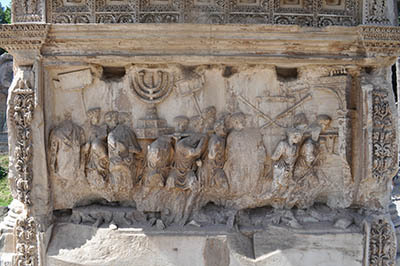
The Menorah is displayed in the Tempulum Pacis in Rome, and 2nd century CE Rabbis claim to have seen it in Rome, as well as various other artifacts from the desroyed temple including the parochet and the choshen.
Now here's the thing. This is the last time historical texts mention the Menorah by name so everything below here needs to be taken with an increasing pile of salt
410 CE: The Visigoths sack Rome. Procipius of Ceasarea (500-560), a Byzantine Historian, writes that the Visigoths take "treasures of Solomon the King of the Hebrews." If this includes the Menorah, the trail goes cold. So that's it right? The Menorah got taken to a secondary location and was lost forever, right?
Wrong, because that's not the only time Procipius mentions Jewish Temple loot.
425 CE: The Vandals sack Rome again, to the point where the word vandalize comes from it. Procipius notes that their leader, Geiseric, takes "a huge amount of imperial treasure" with him to Carthage, which was at that time the Vandal capital.
Trust me this is relevant
534 CE: The Byzantine Emperor Justinian sacks Carthage, and they hold a triumph in Constantinople. Among the paraded items are "treasures of the Jews, which Titus, the son of Vespasian, together with certain others, had brought to Rome after the capture of Jerusalem”
That these "treasures of the Jews" include the Menorah is not a new theory, as is indicated in the 19th century painting Geiseric sacking Rome by Karl Bryullov

(Note the Menorah)
So it's in Istanbul right?
Wrong, because our boy Procipius isn't done yet: according to him, Justinian sent the "treasures of the Jews" to Christian sanctuaries in Jerusalem, since he heard that they were cursed that any city save Jerusalem that held them was doomed to be sacked.
This is the last time the "treasures of the Jews" are mentioned in historical texts.
So for our next step, lets look at major churches in Jerusalem in the 6th century, and officially enter the cork-board and string section of this rant post.
As well as the extant Church of the Holy Sepulcher, the Hagia Sion Basilica, and the Church of the Holy Apostles, Justinian built a church himself in the city, called the Nea, in 534 CE, just nine years after sacking Carthage. It would not be unreasonable that he'd send the Menorah to his own church, so we can theorize that it's in the Nea for the remainder of the 6th century (there are, of course, problems with relying on one historian's account of these things, but this is for fun, not a published article)
So that's it? It's in one of the churches of Jerusalem?
...
So in 614 CE Jerusalem gets sacked by the Sasanian/Persian Empire, who according to historical records destroy all the churches.
Now here's the thing. Recent archaeological evidence gives rise to the possibility that our Byzantine historical sources are trying to stir up outrage against the Sasanians: While mass graves dating to around 614 CE were found, the churches and Christian residential neighborhoods were barely, if at all, damaged, and the Nea itself was very possibly completely undamaged. This is, however, a recent theory, and the academics are still hashing it out.
So it may be in one of the churches of Jerusalem?
Tragically, even if the 614 siege didn't get the churches, in 1009 the Fatimid Caliph al-Hakim bi-Amr Allah destroyed all churches, synagogues, and many religious artifacts of both Christians and Jews in Jerusalem. So if by some miracle the Menorah had survived until this point, if it was in Jerusalem it was most likely destroyed.
But that's disappointing, and what's a good conspiracy theory without going a step or two beyond what is reasonable?
Apparently, while the churches, synagogues and most of the artifacts were destroyed, at least in the case of the Church of the Holy Sepulcher, objects that could be carried away were looted, rather than destroyed. And if we know anything about the Menorah at this point, that thing is certainly able to be carried away by people.
If the Menorah was looted rather than destroyed, it's not unreasonable that it would have made it's way to the Fatimid capital of Cairo. However, as the historical record dried up some 500 years beforehand, beyond this point it's unreasonable to attempt to track the Menorah.
So that's it. If the Menorah wasn't destroyed it most likely made its way to Egypt and was lost or destroyed there.
Is what I'd say if I wasn't so far down this rabbit hole I was beyond reason. Because as we all know there's one place that has all the significant treasures of Cairo and a penchant for looting:
The British Museum
#i cant in good conscience call this either archaeology or history#anyway this is very unhinged but was fun to research#pseudoarchaeology#pseudohistory#jewish stuff
14 notes
·
View notes
Text

BREAKING NEWS! Alaric the Visigoth appointed secretary of state. After burning Eleusis he just kept on rolling, sparking a much-hushed love affair with Vice President JD Vance it seems his charms are endless. His duties as secretary of state will include a morning music playlist post for his loyal followers on truth social media platform. hosted by the one and only Alex Jones. featuring lawsuits by - U2, Leonard Cohen, Tom Petty and Marilyn Manson. stay tuned for more developments.

youtube
Marilyn Manson - Children of Cain
3 notes
·
View notes
Text
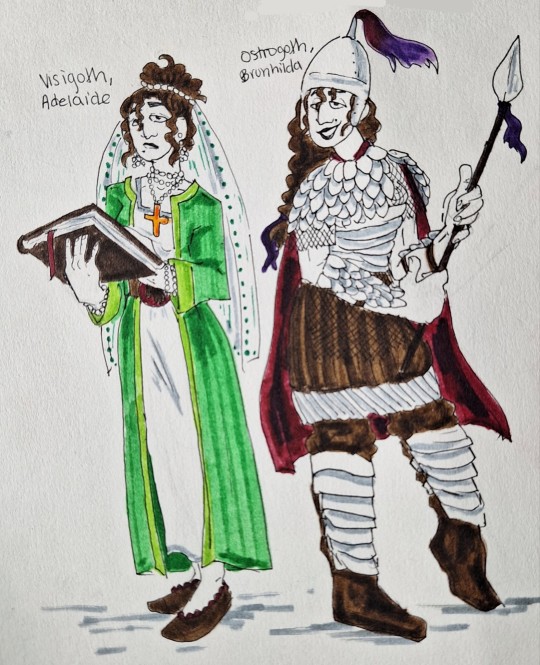
it's about time i made Hetalia OCs:
presenting the Visigothic Kingdom and he Ostrogothic Kingdom, two sisters in Late Antiquity
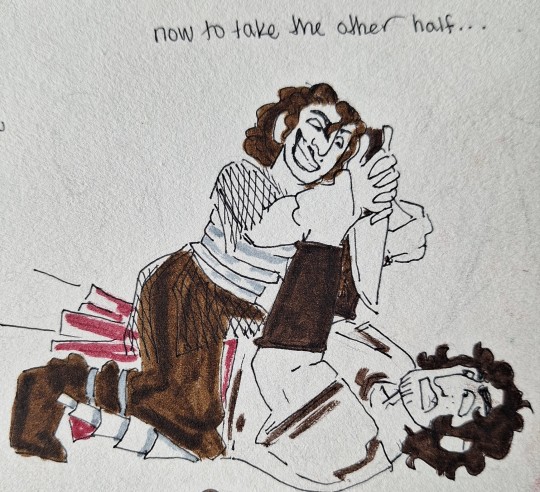

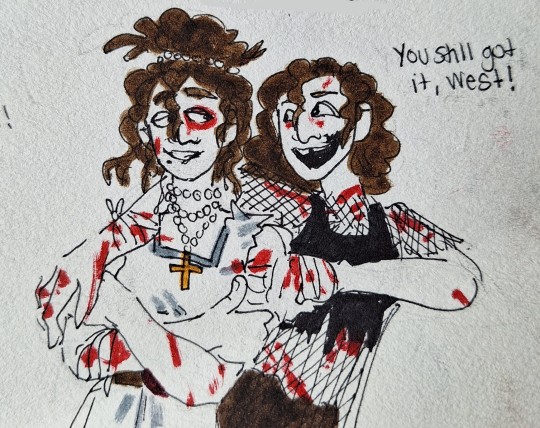

Lore post here!!
#hetalia#historical hetalia#hetalia OC#historical hetalia OCs#visigothic kingdom#ostrogothic kingdom#hetalia ancients#aph ancient rome#hws ancient rome#hetalia antiquity#my life has been ruined my this fuckkng show#source: history major
32 notes
·
View notes
Text
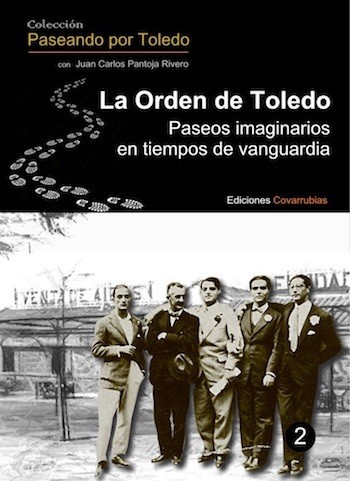
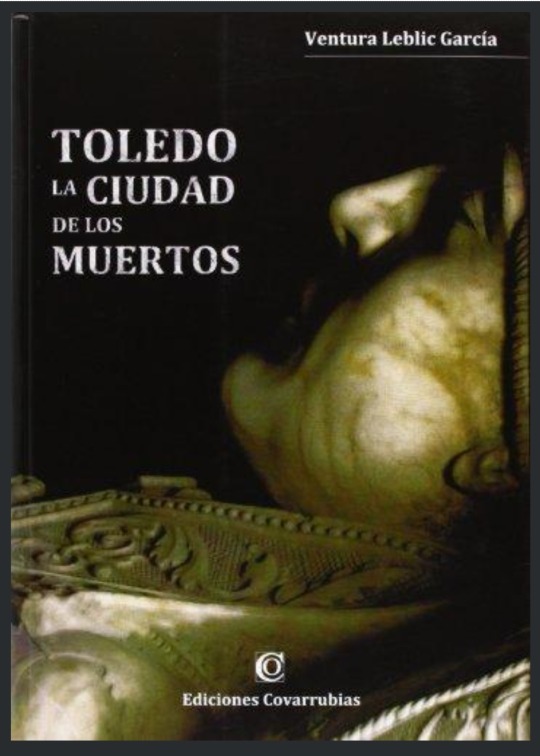
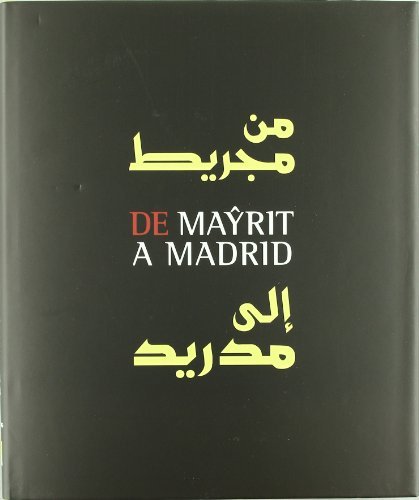

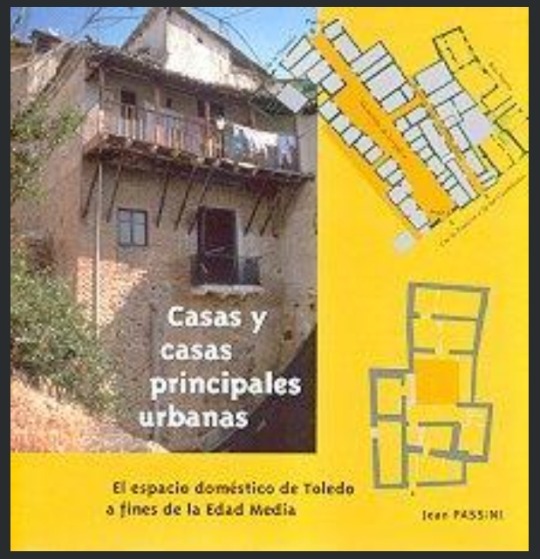
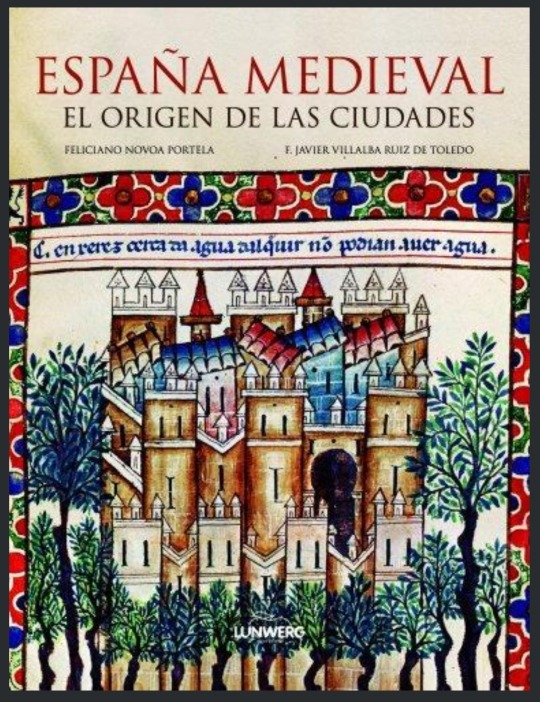

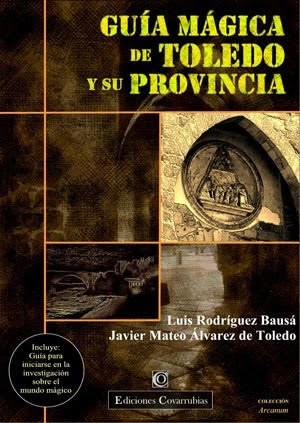


Propaganda
1. La Orden de Toledo: Paseos imaginarios en tiempos de vanguardia (The Order of Toledo: Imaginary walks in avant-garde times)
Author: Pantoja Rivero, Juan Carlos
Editorial: Covarrubias Ediciones
Edition: 2019
Synopsis: The Order of Toledo was, above all, an avant-garde fantasy of the brilliant film director Luis Buñuel, who knew how to infect his friends from the Generation of '27 to the Spanish intellectuality of the first third of the 20th century. Together, they dedicated themselves to living Toledo as if it were the great stage of a surrealist montage, in an artistic (or anti-artistic and irational) contrast with the monumentality and historical past of the old dead city.
(Well, in my blog I have been making posts about The Order of Toledo and the book is a valuable source)
2. Toledo: La ciudad de los muertos (Toledo: The city of the dead)
Author: Leblic García, Ventura Editorial: Covarrubias Ediciones Edition: 2013
Synopsis: Toledo. A large historical necropolis where Carpetans, Romans, Visigoths, Muslims, Jews and Christians rest...their rites around death, beliefs, customs, evolution of the cemetery spaces...
(I have posted the scans of the first pages of this books and I'm planning to keep on posting them but I wanted to know if you want scans from another book)
3. De Mayrit a Madrid: Madrid y los árabes del siglo IX al siglo XXI (From Mayrit to Madrid: Madrid and the Arabs from the 9th century to the 21st century) Editors: Madrid. Casa Árabe e Instituto Internacional de Estudios Árabes y del Mundo Musulmán ; Barcelona ; Madrid: Lunwerg Edition: 2011
Synopsis: This work deals with the Arab-Islamic past (Andalusian, Mudejar and Moorish) of Madrid and its forgotten heritage since it is the only European capital whose origins and name are linked to Arabic.
Revisiting that past and making it known is the objective of this work, which wants to rescue knowledge of a relationship between Madrid and the Arabs that does not end in the Middle Ages, since the town and court maintained various links with what was over time. Arab through diplomatic delegations, Arab figures welcomed by the city, valuable collections of manuscripts and numismatics, a romantic architectural taste that seeded the city with unique neo-Islamic buildings or Hispano-Arab scientific and cultural institutions. And, finally, the cosmopolitan and intercultural reconversion of the city has made it the recipient of a new Arab and Muslim immigration that once again gives human visibility to this relationship between Madrid and the Arab.
4. La Judería de Toledo (The Jewish Quarter of Toledo)
Author: Passini, Jean
Editorial: Ediciones del Sofer
Edition: 2014
Synopsis: The work reveals the vestiges of the areas of medieval Toledo Jewry and its history. It collects a topographical reading of its evolution and offers the main elements through maps, plans and high-quality color photographs.
5. Casas y casas principales urbanas : el espacio doméstico de Toledo a fines de la Edad Media (Houses and main urban houses: the domestic space of Toledo at the end of the Middle Ages)
Author: Passini, Jean. Editor: Toledo. Universidad de Castilla-La Mancha
Edition: 2004
Synopsis: This work is an extension of previous research on different districts, and seeks, for the city as a whole, to “understand the genesis of medieval urban space, to follow its transformations and successive reappropriations” , mainly with the aim of understanding, for one of the ancient provincial capitals of al-Andalus, the modalities of the transition from the Muslim city of the end of the eleventh century (time of its occupation by the Christians) to the Castilian city of the end of the Middle Ages. The main documentary basis of the work is a very important and very detailed inventory of the real estate of the Cathedral Chapter, an inventory carried out in 1491-1492, which covers a considerable heritage of 557 various buildings located in 64 sites or districts. The identification and location of houses, shops, mesones or fondouks and other urban buildings, often difficult on the current plot, has however resulted in the careful study of more than half of these old buildings. The systematic comparison of the text from the end of the Middle Ages with the remains still visible above ground or underground (and this very meticulous and patient work in the cellars of current Toledan houses is one of the great originalities of the research of Jean Passini) gave the results which are presented in this latest publication.
6. España medieval : el origen de las ciudades (Medieval Spain: the origin of the cities)
Authors: Novoa Portela, Feliciano; Villalba Ruiz de Toledo, F. Javier Editors: Barcelona ; Madrid : Lunwerg, D.L.
Edition: 2012
Synopsis: A fascinating essay that will teach us to look at and understand our cities better. In the pages of this essay we will analyze the Roman origins, the Islamic, Christian and European influences to discover the cultural melting pot that marks the Spanish urban legacy, without forgetting some disappeared cities that tell us their history through archaeological remains.
7. Valle-Inclán y el insólito caso del hombre con rayos x en los ojos (Valle-Inclán and the unusual case of the man with x-rays in his eyes)
Editors: Madrid. La Felguera
Edition: 2014 Synopsis: In 1923, a piece of news sparked great controversy among intellectuals, journalists and scientists. Joaquín Argamasilla, a young descendant of a family of aristocrats, claimed to have x-ray vision that allowed him to see through opaque bodies. The controversy, which divided half the country between defenders and detractors of the strange case, reached the highest circles. In April, at the initiative of Queen María Cristina, a commission was established to study the case, chaired by Ramón y Cajal. Valle-Inclán came to Argamasilla's defense and the great Harry Houdini challenged him to a public demonstration in New York.
(Joaquín Argamasilla, Harry Houdini, Valle-Inclán, Ramón y Cajal... yep, we're thinking the same, episode 2xO6, Tiempo de Magia, from El Ministerio del Tiempo, if anyone wants to learn more about this topic this book is good)
8. Guía mágica de Toledo y su provincia (Magical guide to Toledo and its province) Authors: Rodríguez Bausá, Luis; Álvarez de Toledo, Javier Mateo Editorial: Ediciones Covarrubias
Edition: 2010
Synopsis: Saramago wrote that traveling should be a matter of another matter, staying more and walking less; and a little later he added that it is not good to stay for only a quarter of an hour next to a construction that is seven hundred years old. The authors agree with such appropriate phrases, and that is why they have written this route, this uneven guide, this compilation of events, in short, so that the traveler stops in a multitude of towns that only sounded like transit and never like stop and inn. Because the truth is that the city of Toledo and its province discreetly hide a large number of enclaves that deserve to be savored by the five senses, and in which one must rest until the memory is macerated. This is what this work talks about: caves, sacred mountains, magical wells, rainy images, enchanted fountains or thunderous miracles... but, above all, towns, cities and regions; yes, with order and a taste of dissidence and heterodoxy.
Also included is what the authors have called "Beginner's Guide", a brief but rigorous approach to the magical phenomenon, something like an index so that whoever wants it, has the basic premises to get started in the world of research on these issues.
9. AL-ANDALUS. Ocho siglos de civilización musulmana que marcaron la historia y la cultura de España (AL ANDALUS. Eight centuries of Muslim civilization that marked the history and culture of Spain) Author: Masiá, Concha Editorial: ALBA Edition: 2006
Synopsis: "In the year 711, the Muslims arrived in the Iberian Peninsula. They called the vast territory where they settled for 800 years, from Tarifa to the Pyrenees, from the Levant to Portugal, al-Andalus. With their lights and shadows, these eight centuries of Muslim civilization, configuring many aspects of our personality as a people and as a culture, to which we Spaniards of the 21st century are still indebted"
This book and the following two books are like a triology about Al Andalus. This first one collects information about the different periods, states, events and some of its rulers throughout the history of Al Andalus.
10. AL-ANDALUS. Personajes históricos (AL ANDALUS. Historical figures) Author: Masiá, Concha Editorial: Albor Libros, Madrid Edition: 2011
Synopsis: "A general vision of al-Andalus, from the 8th century to the 17th century, through its most prominent characters and also through less known, although no less important, people. Both of them reveal the splendor and glory of the imperishable Andalusian legacy"
This book gathers information about divers people from different states and periods throughout the history of Al Andalus: emirs, caliphs, politicians, religious leaders, warriors, scholars, artists, philosophers, poets...
11. AL-ANDALUS. 800 años de lucha (AL ANDALUS. 800 years of struggle)
Author: Masiá, Concha Editorial: Albor Libros, Madrid Edition: 2011
Synopsis: "In the year 711, the Muslims arrived in the Iberian Peninsula. They called the vast territory where they settled for 800 years, from Tarifa to the Pyrenees, from the Levant to Portugal, al-Andalus. With their lights and shadows, these eight centuries of Muslim civilization, configuring many aspects of our personality as a people and as a culture, to which we Spaniards of the 21st century are still indebted"
This book offers a view on the warfare, battles and military campaigns from different periods and states throughout the history of Al Andalus.
12. 20 grandes obras de 20 autores andalusíes (20 great works by 20 Andalusian authors)
Author: Lirola Delgado, Jorge
Editorial: FUNDACIÓN IBN TUFAYL DE ESTUDIOS ARABES
Edition: 2014
Synopsis: Selection of 20 Andalusian authors and 20 works from the different periods of al-Andalus. The book offers a biography of each author and a detailed description of the work.
#bookblr#books#history#polls#history books#spanish history#al andalus#la orden de toledo#paseos imaginarios en tiempos de vanguardia#toledo: la ciudad de los muertos#de mayrit a madrid#madrid y los árabes del siglo IX al siglo XXI#la judería de toledo#casas y casas principales urbanas#el espacio doméstico de Toledo a fines de la Edad Media#españa medieval : el origen de las ciudades#valle-inclán y el insólito caso del hombre con rayos x en los ojos#guía mágica de toledo y su provincia#AL-ANDALUS. Ocho siglos de civilización musulmana que marcaron la historia y la cultura de España#AL-ANDALUS. Personajes históricos#AL-ANDALUS. 800 años de lucha#20 grandes obras de 20 autores andalusíes#sefarad#madrid#toledo#the order of toledo#The Order of Toledo: Imaginary walks in avant-garde times#Toledo: The city of the dead#From Mayrit to Madrid#Madrid and the Arabs from the 9th century to the 21st century
10 notes
·
View notes